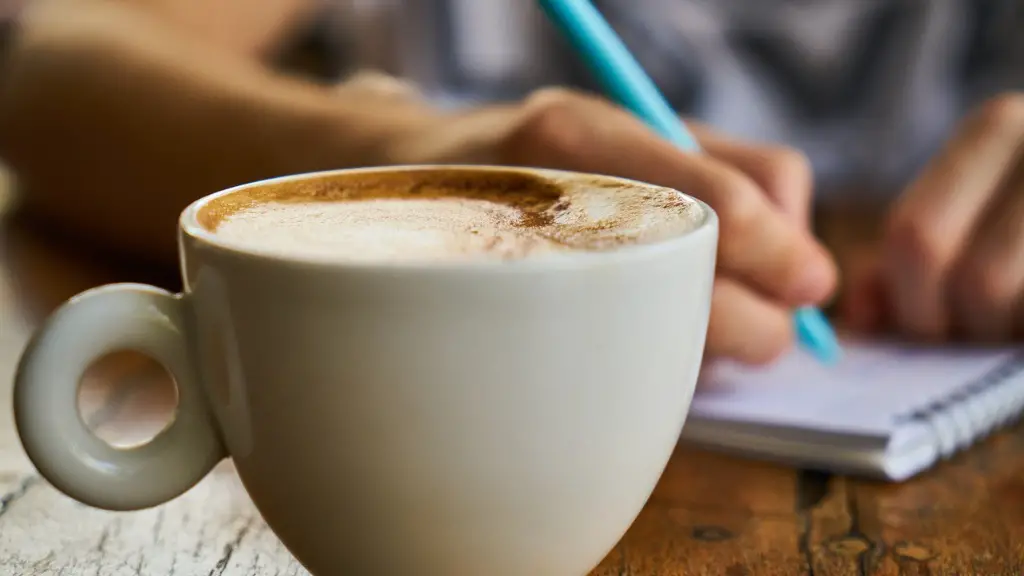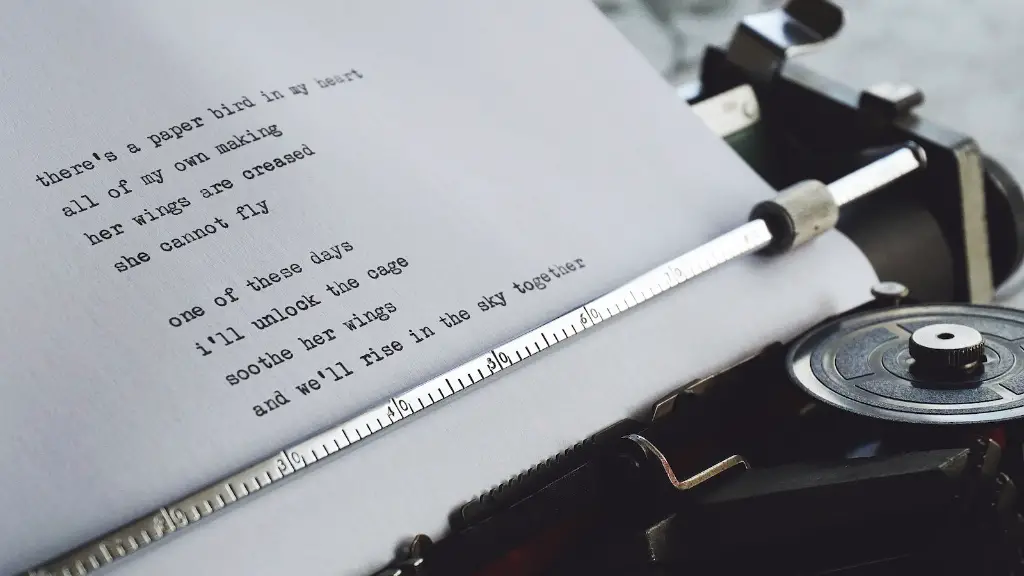Rhythm and Sound
Poetry is a type of literature which uses the rhythm and sound of language as its fundamental element. It is usually composed in verse form and has traditionally been used to express emotions, feelings, or ideas. Rhythm and sound help to create a certain atmosphere or mood in which the reader can connect with. As language is used naturally in everyday life, a poet can use it to create a dialogue between the writer and the reader. In poetry, metaphors and similes are commonly used to create vivid imagery through the use of imagery and comparison.
Rhythm is a part of the natural flow of language and it is used in poetry to control the speed and mood of the poem. Rhythm creates an even pace for the poem which allows the poem to flow more naturally. Furthermore, it can add emphasis to certain words and phrases which helps to create a more powerful effect on the reader. Rhythm can be created in a number of ways, such as repetition, rhyme, and assonance, which are often combined to create an overall effect in a poem.
Sound can also be used in poetry to create a certain atmosphere or emotion. This can be done through the use of alliteration, assonance, and consonance. Alliteration involves the repetition of the same sound at the beginning of words or phrases. Assonance involves the repetition of vowel sounds and consonance involves the repetition of consonant sounds. These techniques are often used in combination to create a certain mood in the reader, such as tension, excitement, or joy.
Structure and Form
The structure of a poem is another one of its essential elements. Poetry is composed in lines, and the structure of these lines creates a certain rhythm and flow which helps to control the speed and mood of the poem. Some poems are structured in a more traditional way and may have a specific rhyme scheme or meter, while others may have a less structured form. Furthermore, a poem may also be composed in stanzas. A stanza is a group of lines which is separated by a line or a blank space.
A poem may also be composed in the form of a sonnet, which is a 14-line poem composed in two alternating stanzas of four lines and three lines respectively. The rhyme scheme might also be different and set up in a specific order which is known as the rhyme scheme. Furthermore, the poem may also feature of a specific meter which is known as the meter of the poem. Meter is a measurement of syllables and the stress placed on certain syllables to create a certain effect.
Imagery and Diction
Poetry also relies heavily on imagery and diction to create a vivid image in the reader’s mind. Imagery involves the use of descriptive words, phrases, or images to create a mental image of the subject. This can take the form of visual, auditory, olfactory, gustatory, or tactile images which allow the reader to connect with the poem on an emotional level.
Diction is another one of the fundamental elements of poetry which involves the use of language. Through the use of diction, poets are able to express their ideas and feelings in different ways. This helps the reader to gain a greater understanding of the poem and to connect with the poem on a deeper level.
Voice and Tone
Voice and tone are also an essential element of a poem. Voice refers to the person speaking in a poem and this can be either first-person or third-person. The tone of a poem reflects the attitude of the poet, and this can be either serious, whimsical, or joyous. Voice and tone are used to help the reader feel a greater connection to the poem, as the poet’s emotions and feelings can be felt more deeply through these elements.
Mood and Theme
Mood and theme are also essential elements of poetry. Mood refers to the atmosphere that is created by the poem and this can be either positive, negative, calm, or sorrowful. The theme is the central idea of the poem and this is usually explored through the mood. The mood and theme are used to create a deeper connection between the poet and the reader, and they help to create a more powerful emotion.
Symbolism and Metaphor
Symbolism and metaphor are two of the most important elements of poetry. Symbolism involves the use of symbols to represent ideas or feelings. This can be done through the use of objects or symbols which represent certain abstract ideas or feelings. Metaphor is a form of symbolism which involves the use of figures of speech to represent ideas or feelings. The use of symbolism and metaphor helps to create a more vivid image in the reader’s mind, and it can be used to convey a deeper meaning to the reader.
Wordplay and Figurative Language
Wordplay and figurative language are also commonly used in poetry. Wordplay involves the use of clever linguistic techniques to create a certain effect. This can be done through the use of rhyming words, puns, or other linguistic devices. Figurative language involves the use of figurative expressions, such as similes and metaphors, to create a vivid image in the reader’s mind.
Conclusion
In conclusion, poetry is an ancient art form which relies on the use of rhythm and sound, structure and form, imagery and diction, voice and tone, mood and theme, symbolism and metaphor, and wordplay and figurative language to create a certain atmosphere or emotion in the reader. These are the fundamental elements of poetry which are used to create a powerful effect in the reader.


